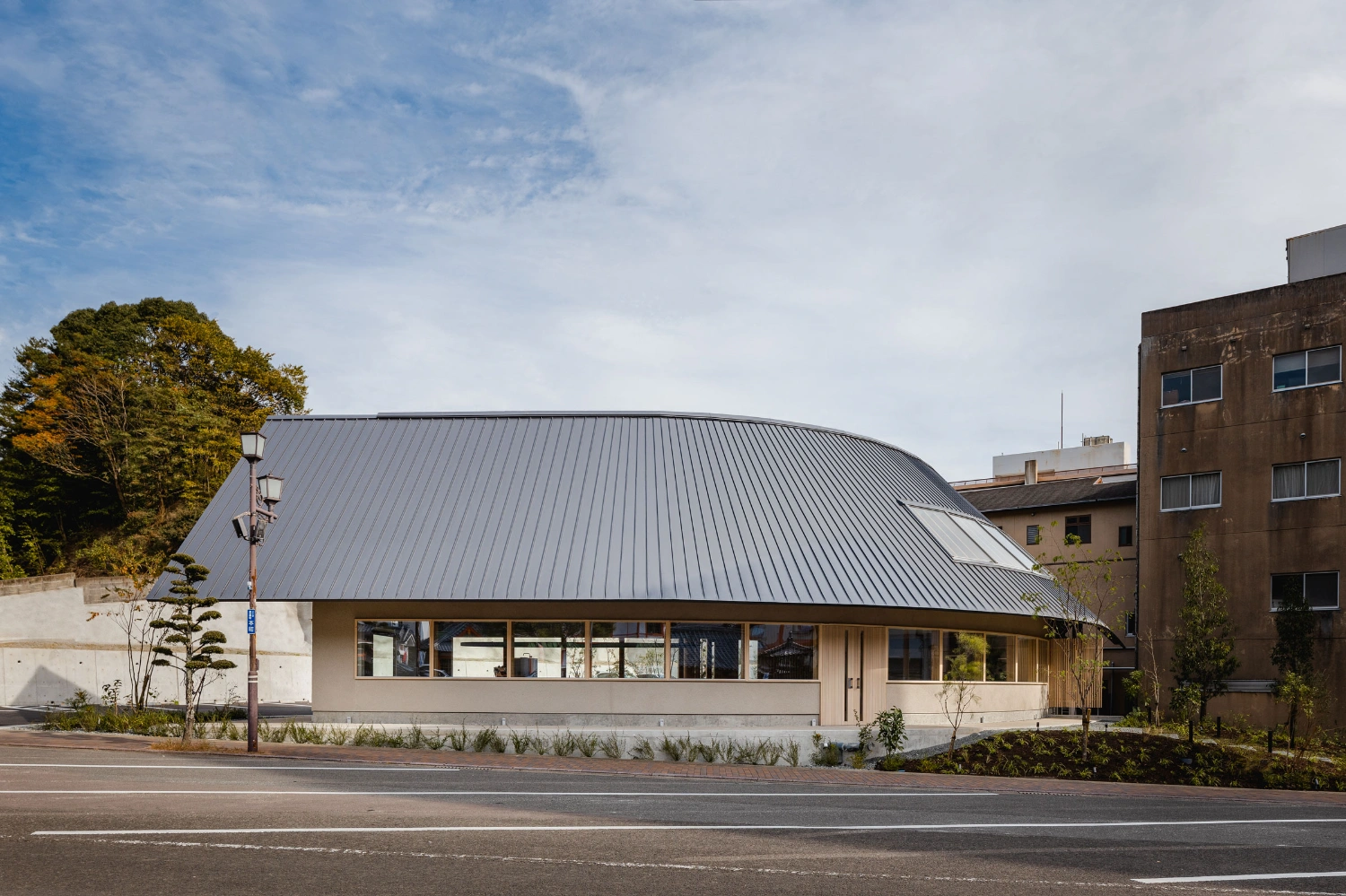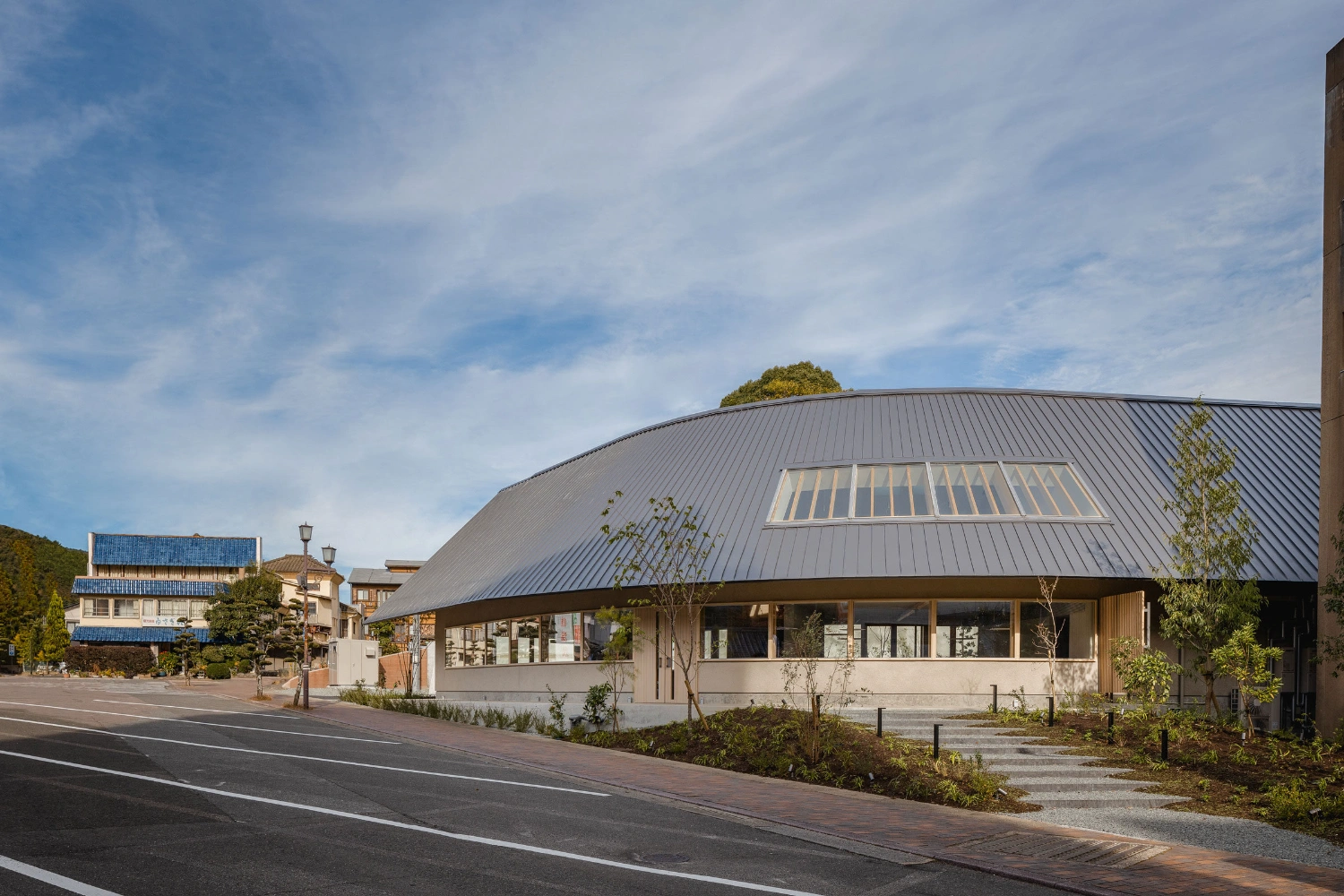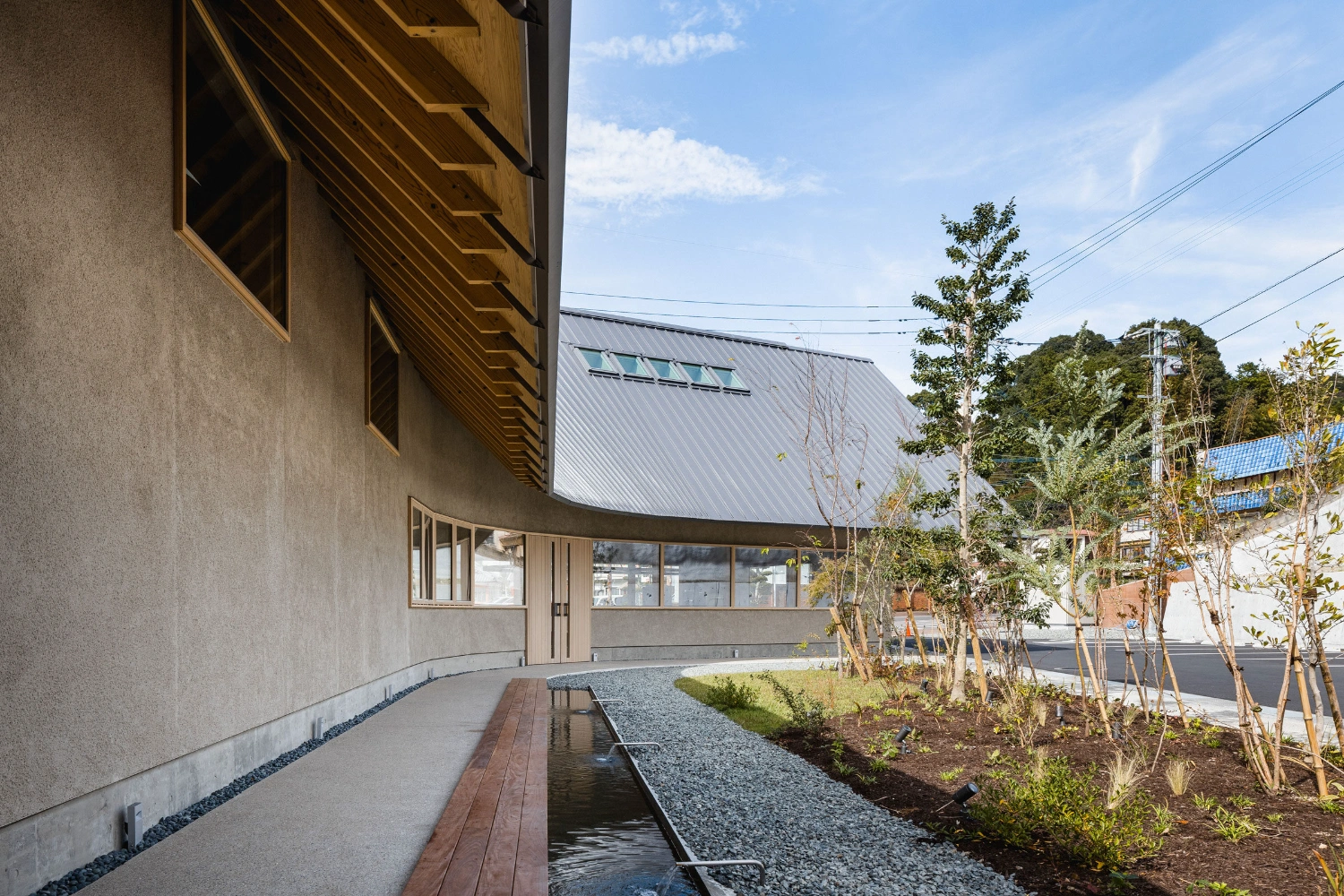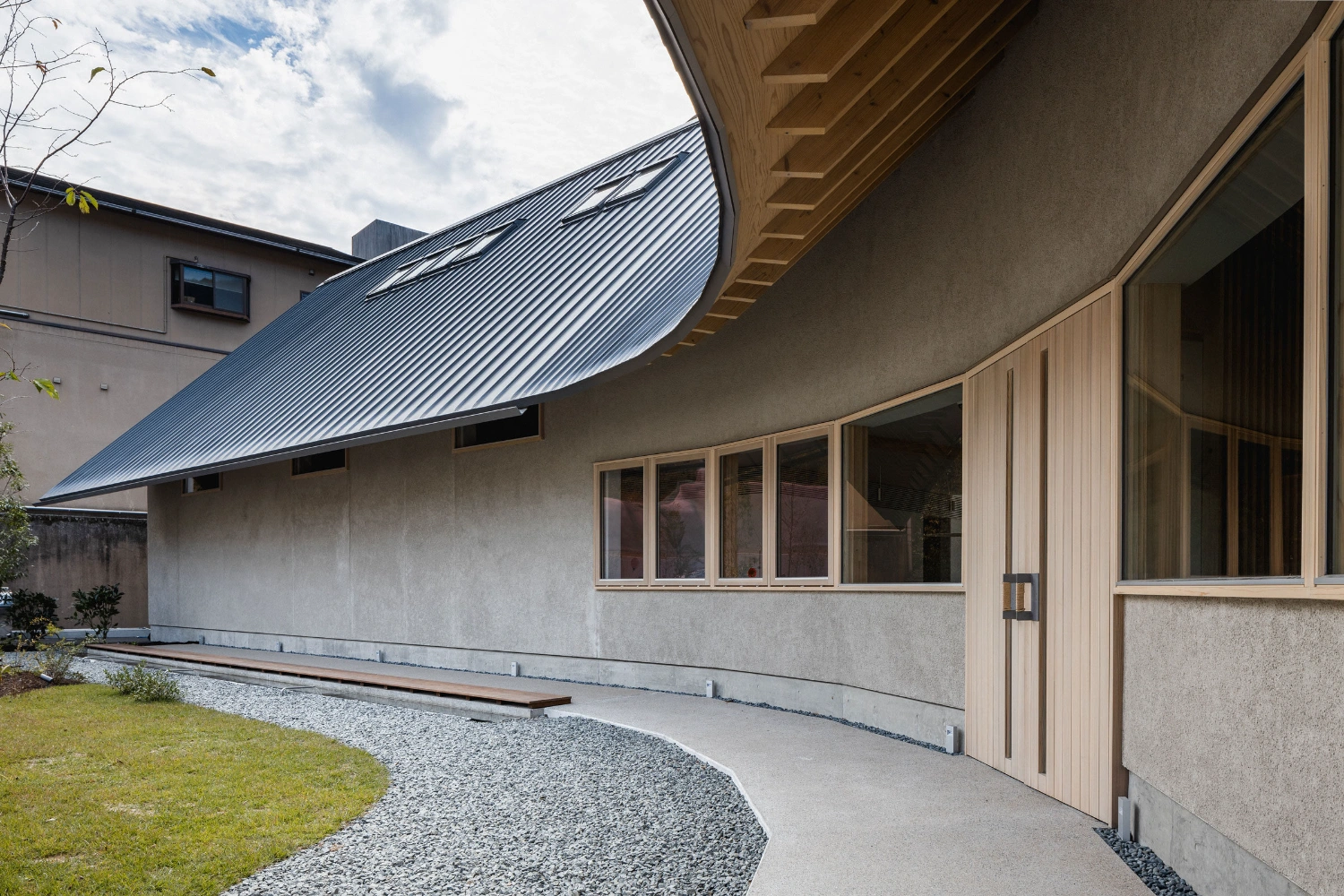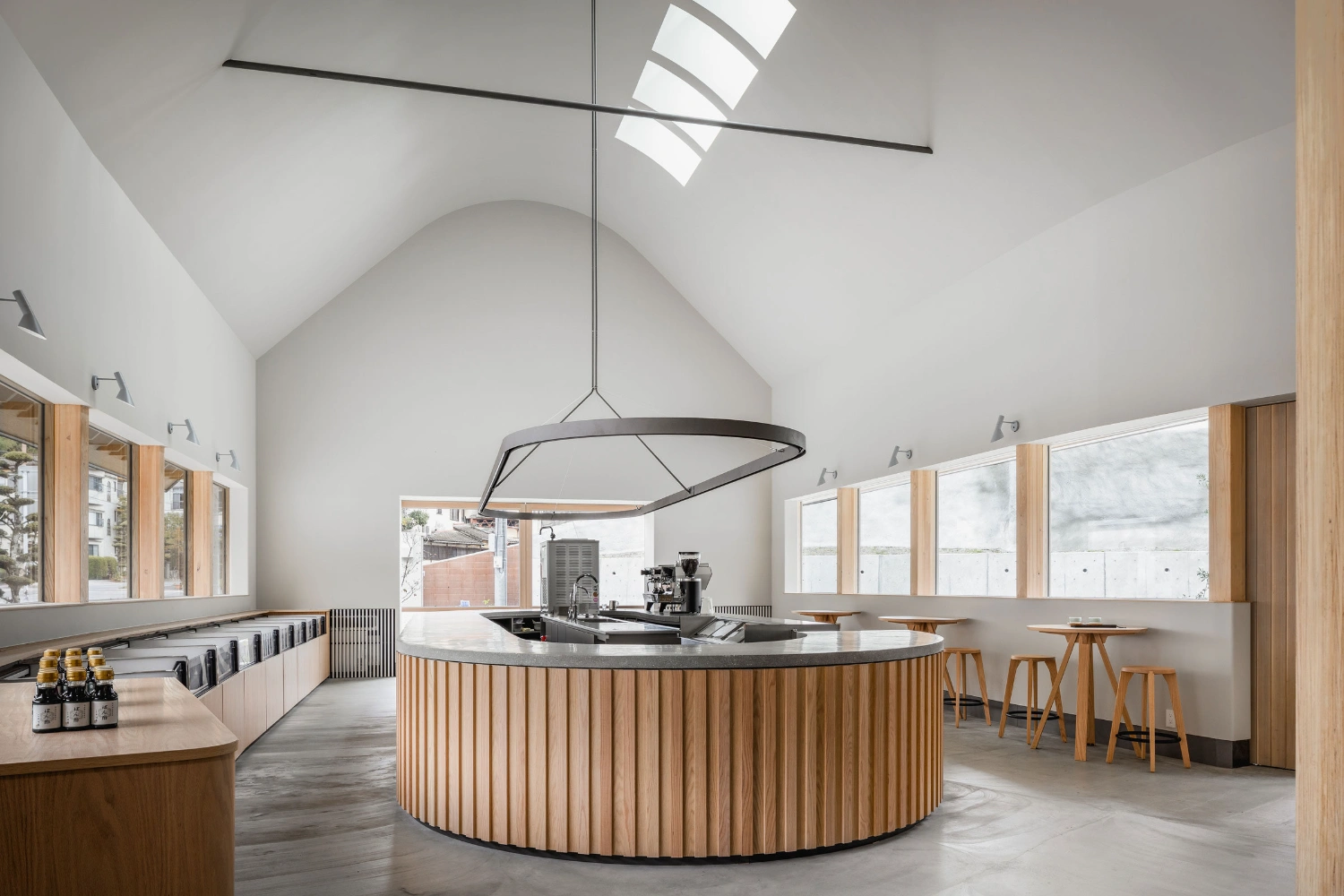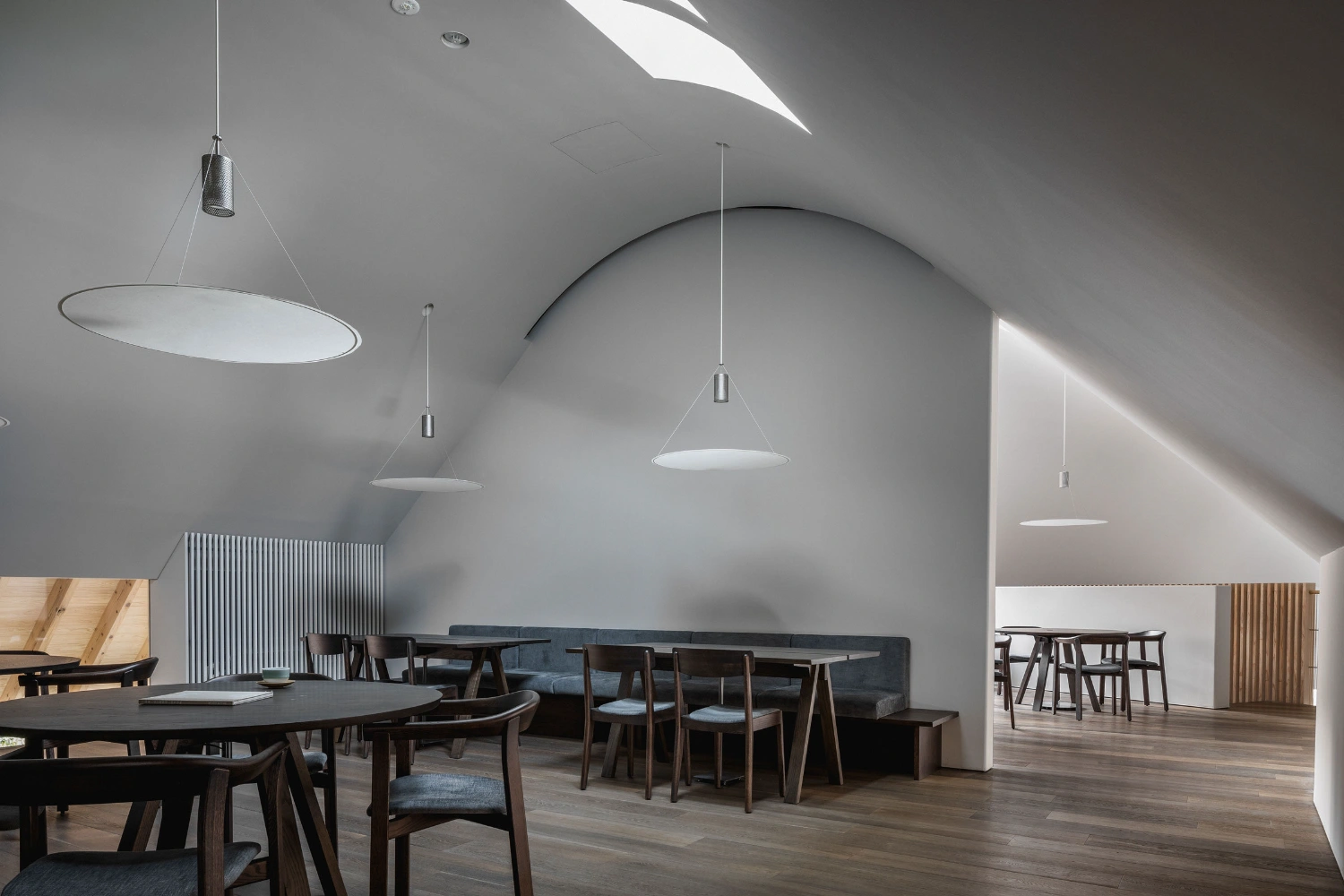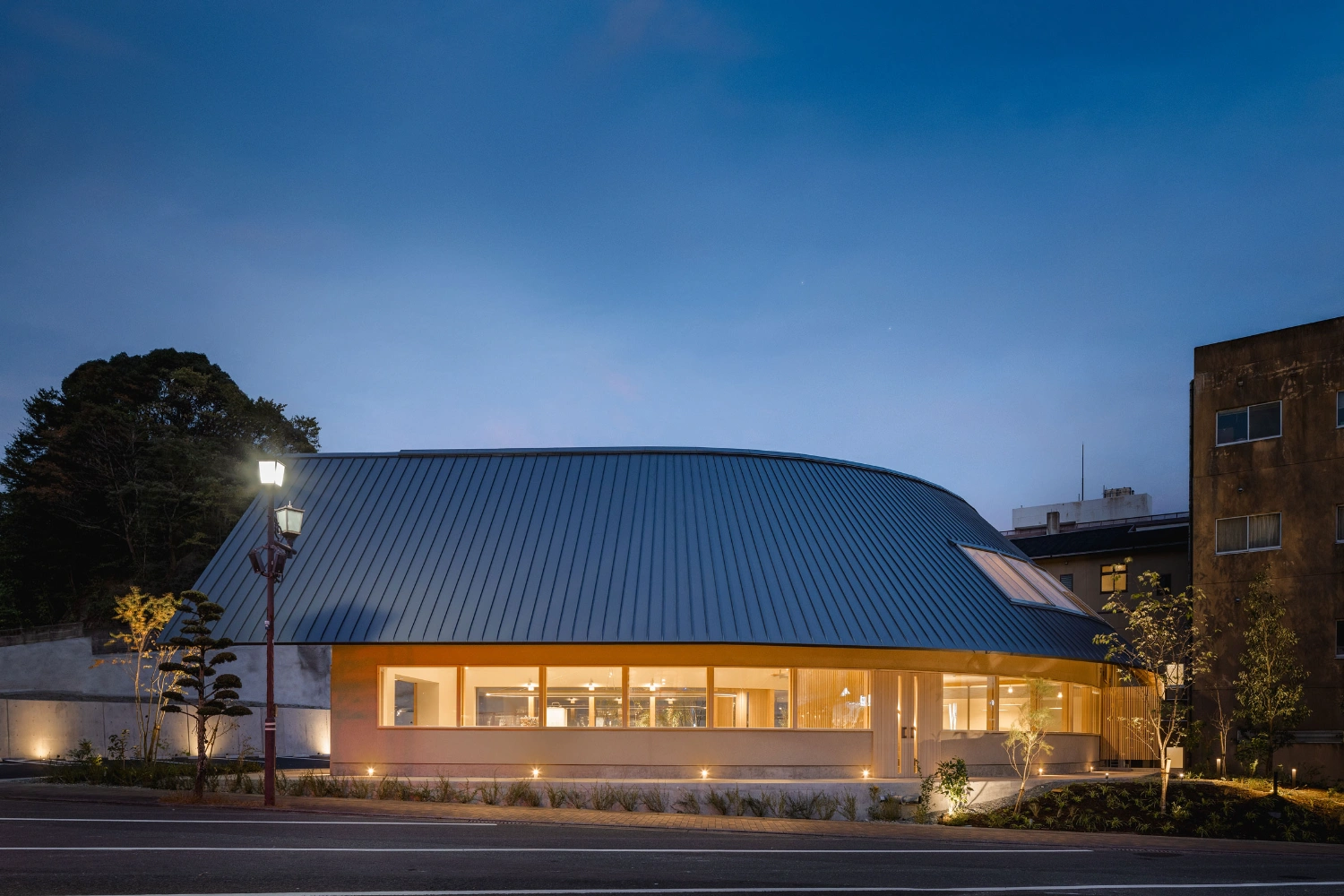At Takeo Onsen, Japan, Keiji Ashizawa’s curved timber structure marries shop, restaurant, and courtyard in a quiet act of cultural and civic regeneration — a gesture of place over program.
The project begins with a bold choice: to resemble a vernacular wooden house with a softly arched exterior that dialogues with the adjacent gate. That curvature, far from being merely aesthetic, frames a new threshold — a semi‑public courtyard that draws visitors inward. Within this sheltered court lies a foot bath fed by hot spring water: an invitation to linger, to slow, and to sediment one’s experience of place through body and time.
Inside, the dual program of shop and restaurant is orchestrated through gentle volumes that insinuate rather than barricade. The retail space promotes local tofu culture; the restaurant offers immersive consumption. Between them, the atrium — open to sky and air — acts as a mediating membrane, a spatial spine along which the two uses breathe together. The contours of floors, the continuity of materials, and the gradations of enclosure avoid binary rigidity.
Ashizawa pays particular attention to light as a material. Windows facing toward the gate capture shifting daylight over the course of the day. The skylit atrium provides ventilation and a dramatic tumble of brightness onto the soft plaster curves of ceiling and wall. Though the material palette is consistent across levels and rooms, the modulation of tone and shadow renders each moment of occupancy distinct — a choreography of light that enfolds the visitor.
Detail is attuned, too: suspended pendants wrapped in washi paper from regional producer Nao Washi cast a diffuse glow over the tofu pots, while their light reflects upward into the domed ceilings. Furniture comes from Ariake in Morodomi (Saga), reinforcing the project’s commitment to regional craft and sustaining local economies. In sum, the building becomes both a vessel and a proposition: not simply a storefront, but a social instrument.
In the context of a declining local population, this is not architecture of spectacle but architecture of gestures — of thresholds, of gathering, of reclamation. Over time, the building may not only resuscitate the immediate urban fabric of Takeo Onsen, but emerge as a symbol borne from the very substrate of its community.


